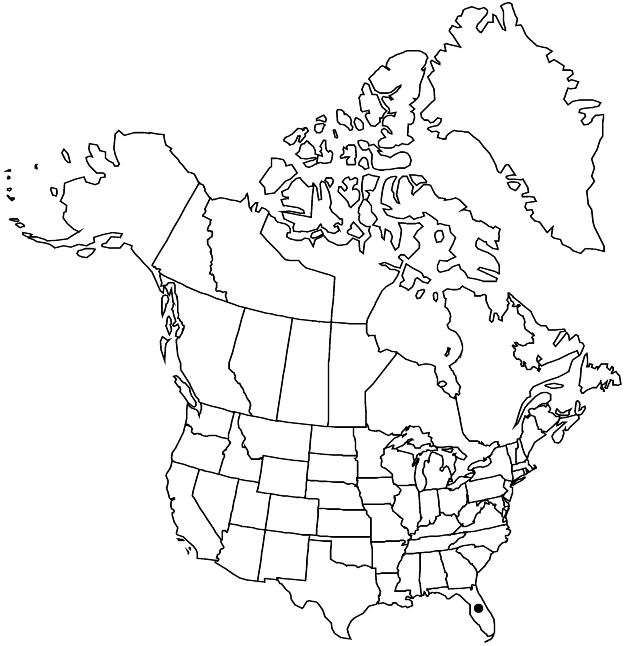Waltheria bahamensis
Torreya 3: 105. 1903.
Plants to 6(–10) dm, resinous, appearing subglabrous but microscopically densely sessile-glandular, usually sparsely and very minutely stellate-puberulent. Stems 1–3 mm wide, nodes knobby, joints exserted 0.8–1 mm. Leaves: stipules linear-triangular, to 5 mm; petiole 1–12(–20) × 0.4–0.6 mm, with low tubercles; blade concolor, dark brown, bronze, or coppery, drying brownish olive, usually broadly oblong to oblong, ovate-oblong, or obovate-oblong, sometimes ovate, to 5 × 3 cm, resinous, base widely cuneate to slightly cordate, margins sharply dentate or sharply crenate-dentate, revolute, apex obtuse to rounded, surfaces glabrate, slightly scabrous, puberulent, and/or sparsely hispidulous with rays planar, almost lepidote, at times moderately dense finely pubescent, trichome rays 0.1–0.5 mm, densely subsessile-glandular, costal vein thick. Inflorescences subsessile glomerules on ultimate 5–7(–12) nodes; peduncle 1 × 0.8 mm; glomerules compact, 0.4–0.9 × 0.5–1.2 cm, 6–12-flowered, composed of terminal flower subtended by accessory shoots with simple elongate cincinnate dichasia; bracteoles free, bracts subequal, narrowly elliptic, lanceolate, or linear, exterior lanceolate, interior linear, wider bracts 0.4–1.4 mm wide, apex acute, entire distally. Flowers sessile; calyx 2–4.8 mm, hirsutulous and hirsute, tube 1.7–2.5 mm, lobes 1–2 mm; petals bright yellow-orange, oblanceolate, obovate, or oblong, 2.5–4.8 × 0.7–1.3 mm, abaxially glabrous, adaxially subglabrous, densely papillose, with a few pilulose hairs, margins glabrous or very minutely stellate-puberulent, claw adherent for 0.3–0.7 mm to stamen tube base; stamens 1.8–3.1 mm, uneven, tube at apex incised, arcuate, or truncate, yellow-papillose; anthers 0.6–1 mm, base sagittate, ovate-dehisced; pistil 2.6–3.5 mm; ovary sericeous apically; styles 1–1.5 × 0.1–0.2 mm, lateral, densely white-sericeous; stigmas 20–40-branched, penicillate or distended-penicillate, obconic when dried, 0.8–1.4 × 1.2–1.5 mm, column 0.3–0.4 mm, branches 0.6–1 mm. Capsules obconic, transverse-truncate at apex, 1.7–2.4 × 1.5–1.7 mm, with dense white puberulent line at apical valve margin; walls with endocarp corneous 1.6+ mm from apex, sometimes thin at base and along valve margins; dehiscence usually 2-valvate, valve halves completely separate. Seeds dull black, obovoid, 1.8–2.2 × 1.1–1.5 × 1.1 mm, apex with finely keeled linear low brown ridge, surface generally smooth but slightly pusticulate.
Phenology: Flowering and fruiting year-round.
Habitat: Dry, pineland regions (Big Pine Key), pine barrens, hammocks, everglades, savannas, coastal rocky ground, sandy beaches
Elevation: 0 m
Distribution

Fla., West Indies (Bahamas).
Discussion
Waltheria bahamensis has been considered endemic to the Bahamas. Plants of W. bahamensis are found in Florida from Camp Jackson, Frostproof, Miami, Pine Crest, and Sanibel Island.
Some Florida collections previously called Waltheria indica are attributable to W. bahamensis or W. bahamensis × W. glabra; other specimens are hybrids of W. bahamensis and W. indica (J. G. Saunders 1995).
Selected References
None.